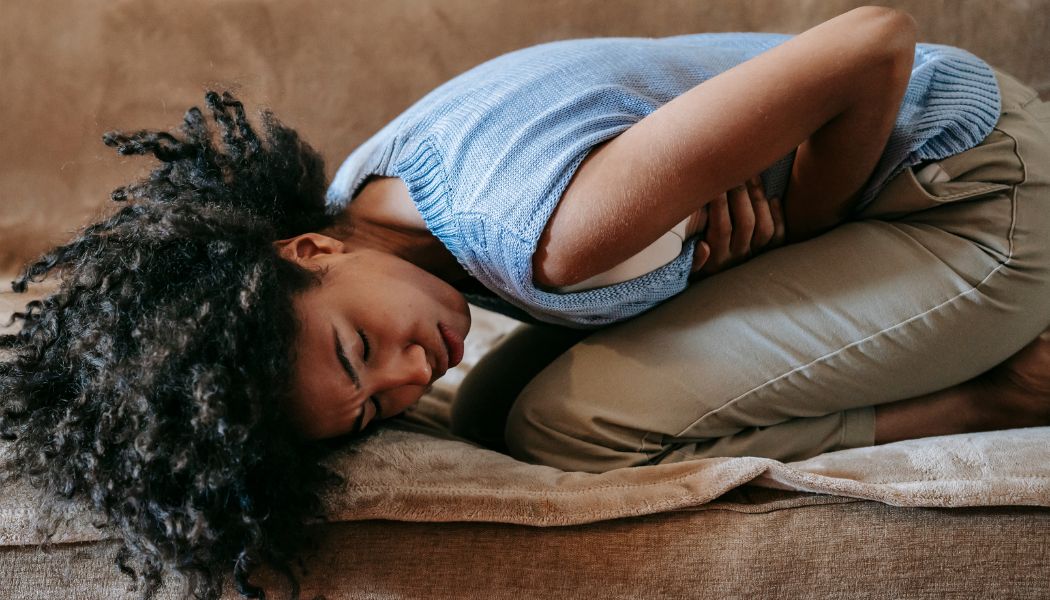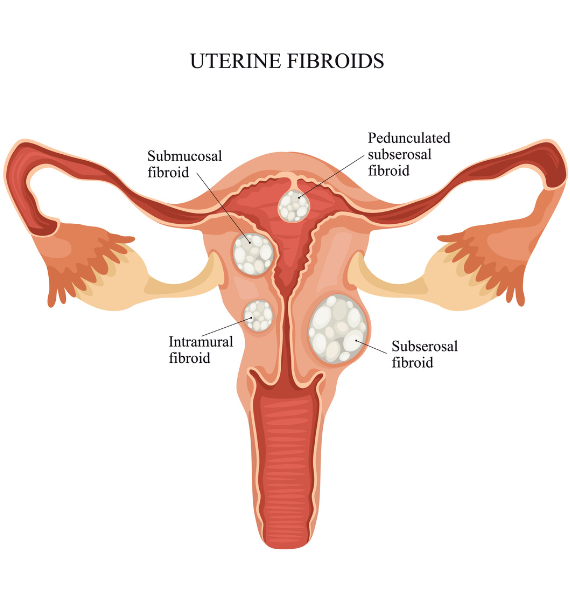Uterine Fibroids

Uterine fibroids are non-cancerous tumors that grow in the wall of the uterus. They can range in size from tiny seedlings to larger growths that can fill the entire uterus.
Many women will develop uterine fibroids in their lifetime. In fact, 75 – 80% of women will be diagnosed with fibroids at some point in their lives. Luckily, many women will experience little to no symptoms, but for those that do, it can be debilitating and embarrassing.
Severe symptoms of fibroids include:
- Pelvic pain or cramping that won’t go away
- Overly heavy, prolonged or painful periods
- Spotting or bleeding between periods
- Anemia
- Feeling of needing to urinate frequently
- Constipation
- Difficulty getting and/or problems with childbirth
The exact cause of uterine fibroids s is unknown, but hormonal imbalances, genetics, and other factors may play a role. Treatment options may include medication or birth control to relieve symptoms, uterine fibroid embolization, surgery, or a combination of both, and depend on the symptoms, size and location of the growths, and the overall health of the woman.
Treatment: Uterine Fibroid Embolization
Uterine Fibroid Embolization (UFE) is a minimally invasive therapy that does not require surgery, offered as an outpatient procedure, decreasing recovery time. It is a great treatment option for women who are experiencing severe symptoms of uterine fibroids.
The Best Candidates for UFE are Women Who:
- Have fibroids that are causing heavy bleeding
- Have fibroids that are causing pain or pressing on other organs
- Don’t want to have a hysterectomy
- Do not desire future pregnancy
The Procedure
While sedated, a catheter is inserted into the femoral or radial artery guided by fluoroscopy. Tiny particles are injected into the vessels that supply blood to the fibroid(s), blocking the blood supply and shrinking the fibroid(s). Once blood flow to the fibroids is blocked, patients can return home while the fibroids gradually shrink over the next weeks and months.
The Recovery
Following UFE, most patients are able to recover at home or following a short (less than 24 hours) stay in the hospital. Patients may experience flu-like symptoms (fever, chills, lethargy, etc.) for 3 – 5 days after the procedure. Medications for pain and nausea will be prescribed to use at home as needed.
It can take 1 – 3 months following the UFE procedure to notice a significant difference. Fibroids can continue to shrink 6 – 9 months or longer.
Insurance Coverage
Nearly all insurance companies, including Medicaid, will cover treatment of symptomatic fibroids.
Our team will work with insurance companies to authorize coverage before the procedure is performed.
The Next Step
Patients who think they may be a good candidate for Uterine Fibroid Embolization should contact their healthcare provider who will work with our TRA Endovascular team on a plan to evaluate and treat your condition.
Have questions?
Contact UsThe American College of Obstetrics and Gynecology (ACOG) recognizes UFE as a safe and effective treatment of fibroids.
Additional Resources: Radiologyinfo.org
